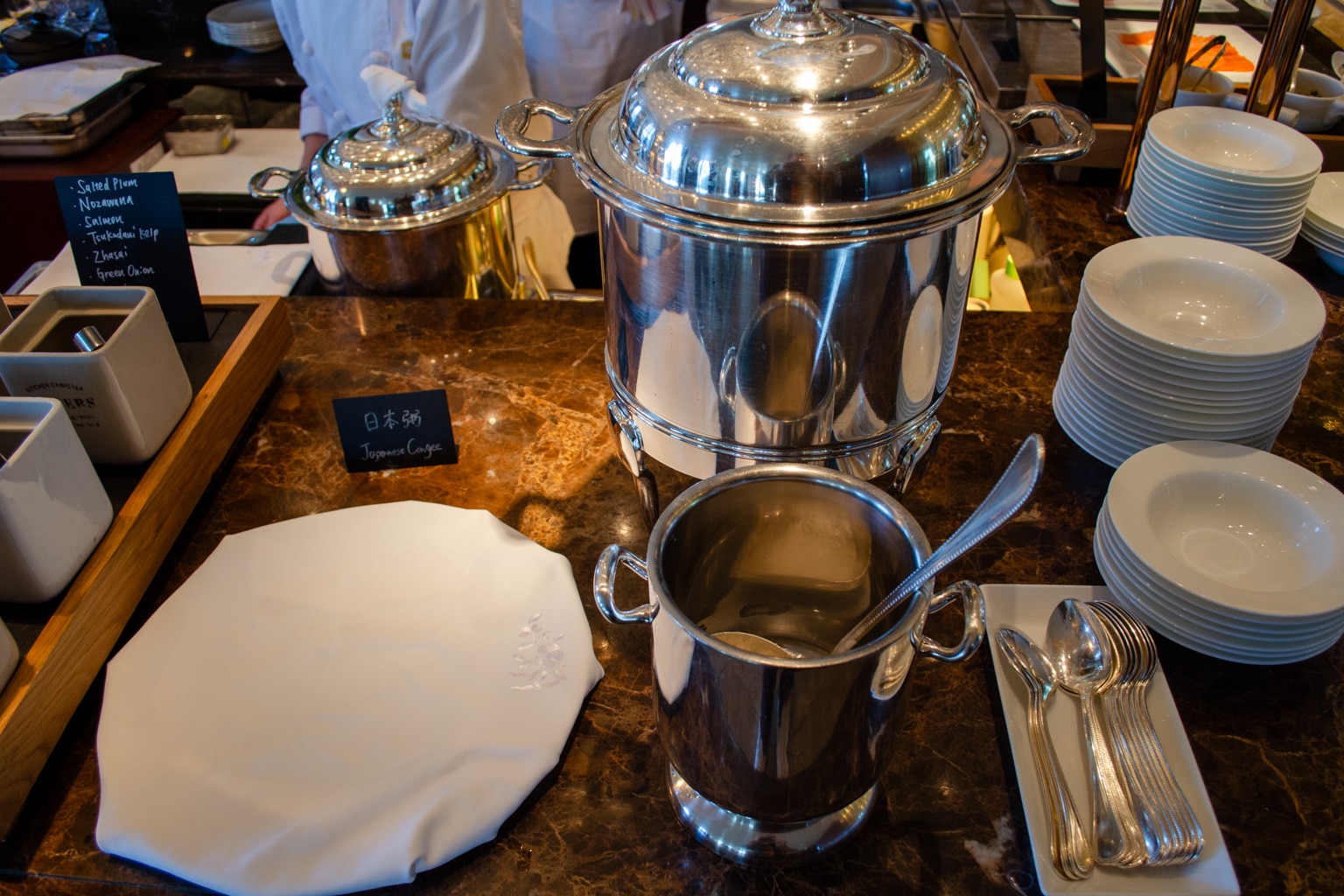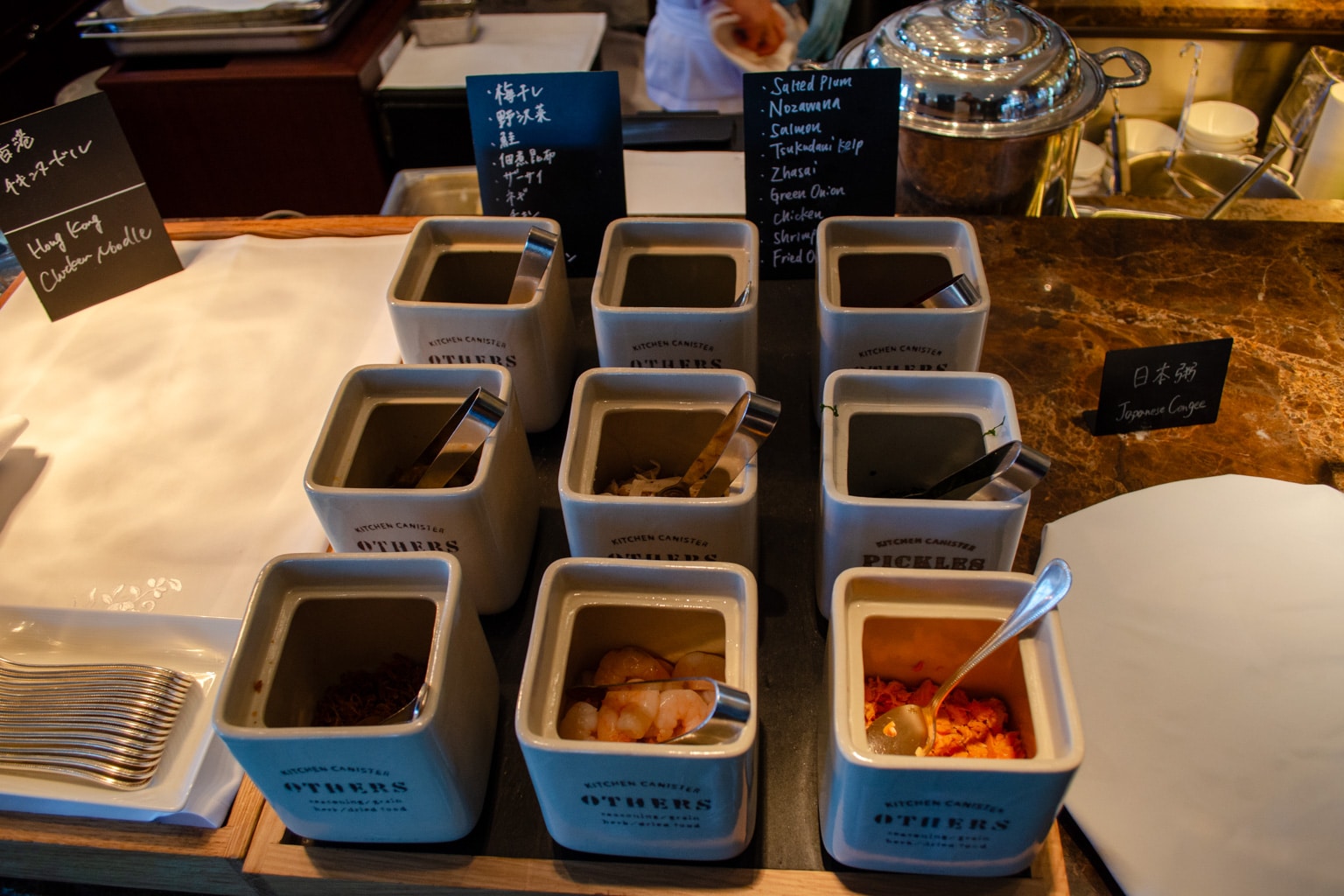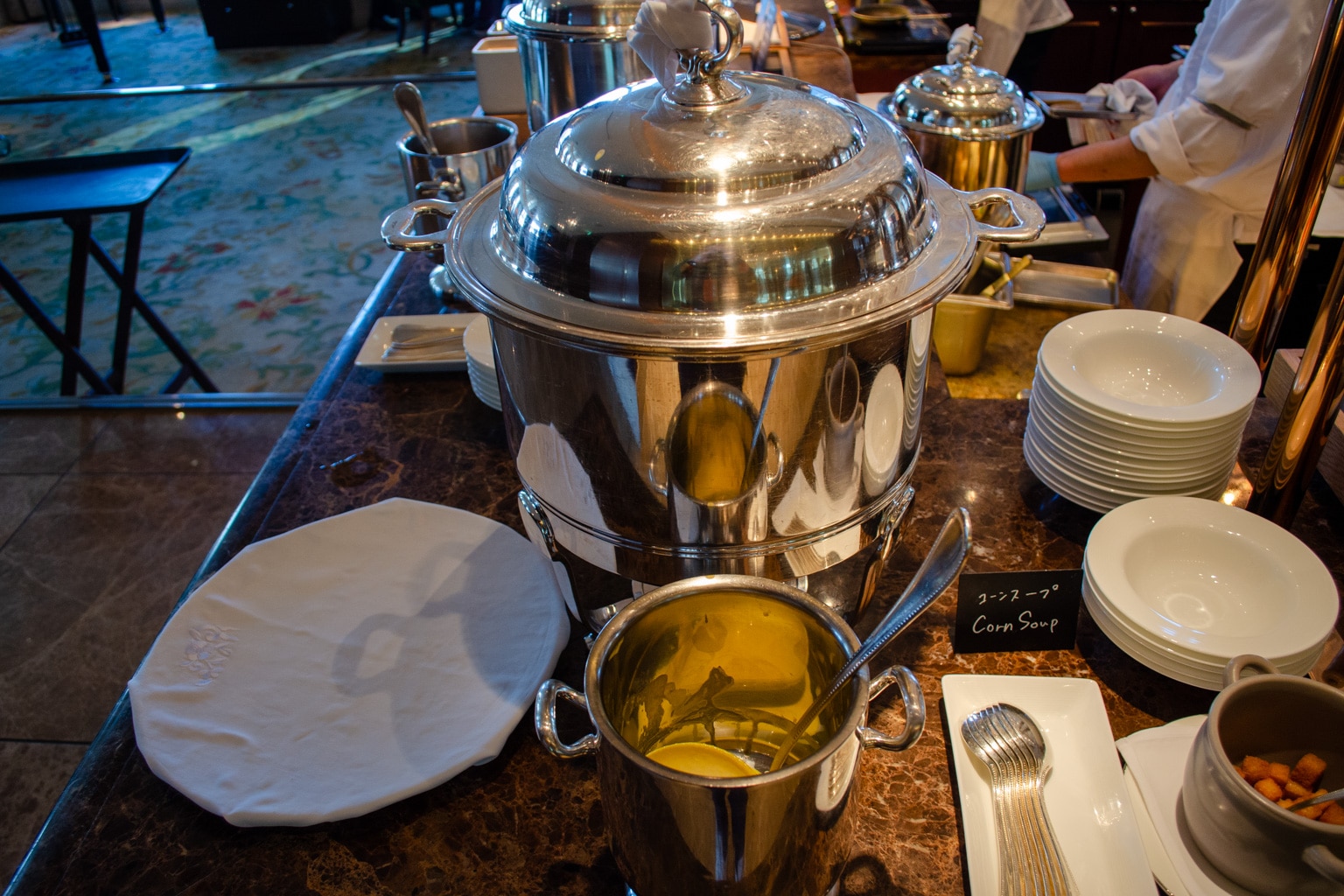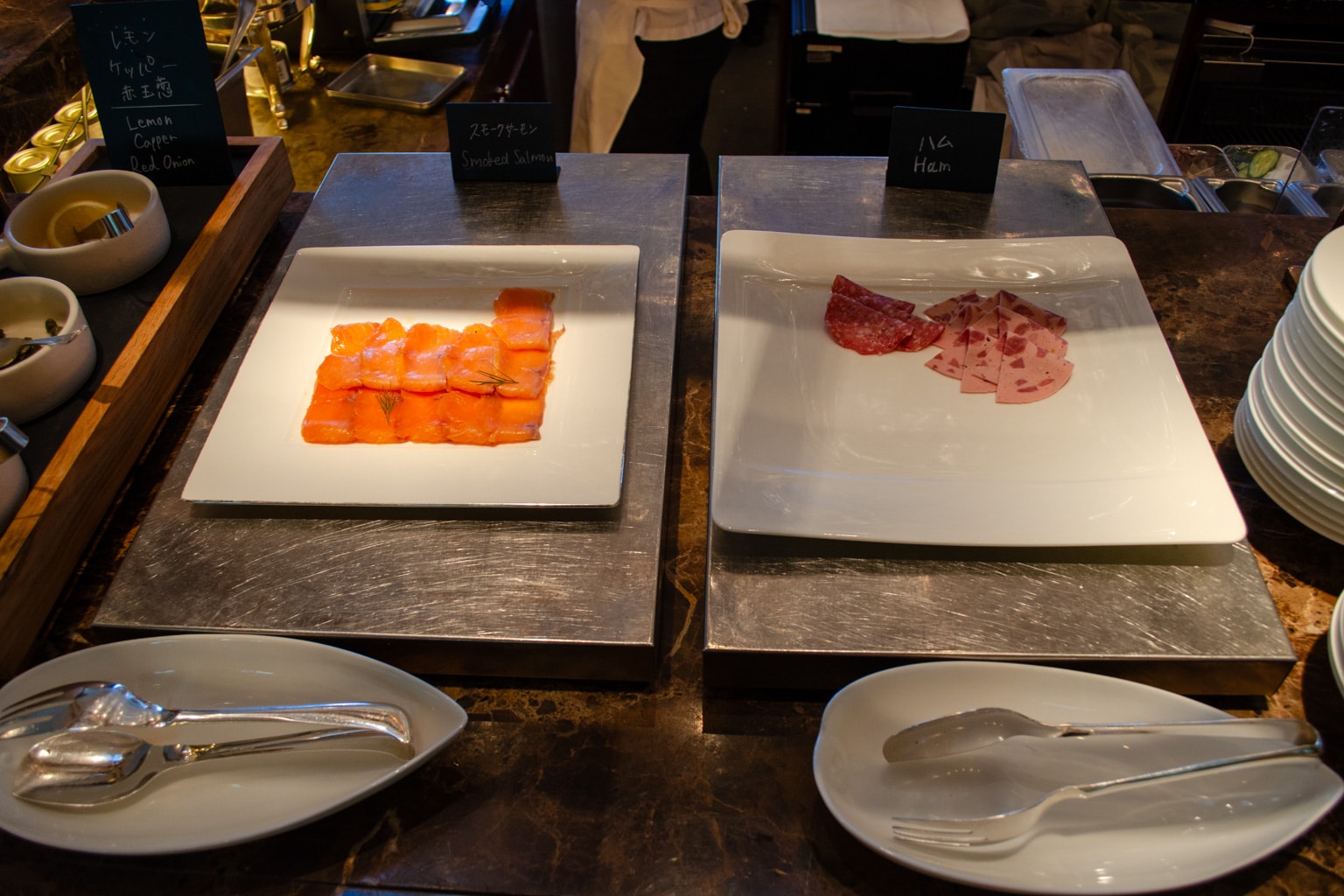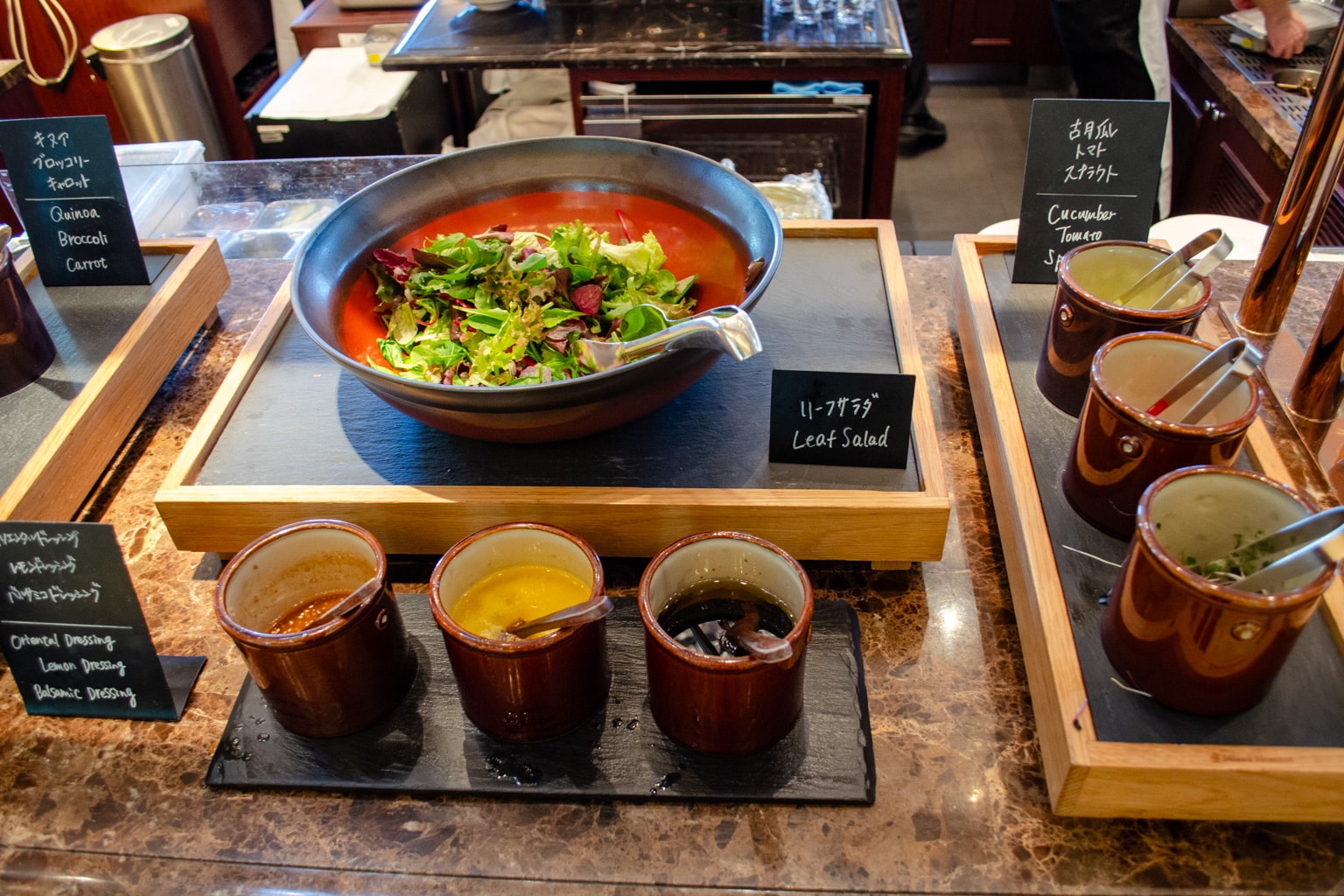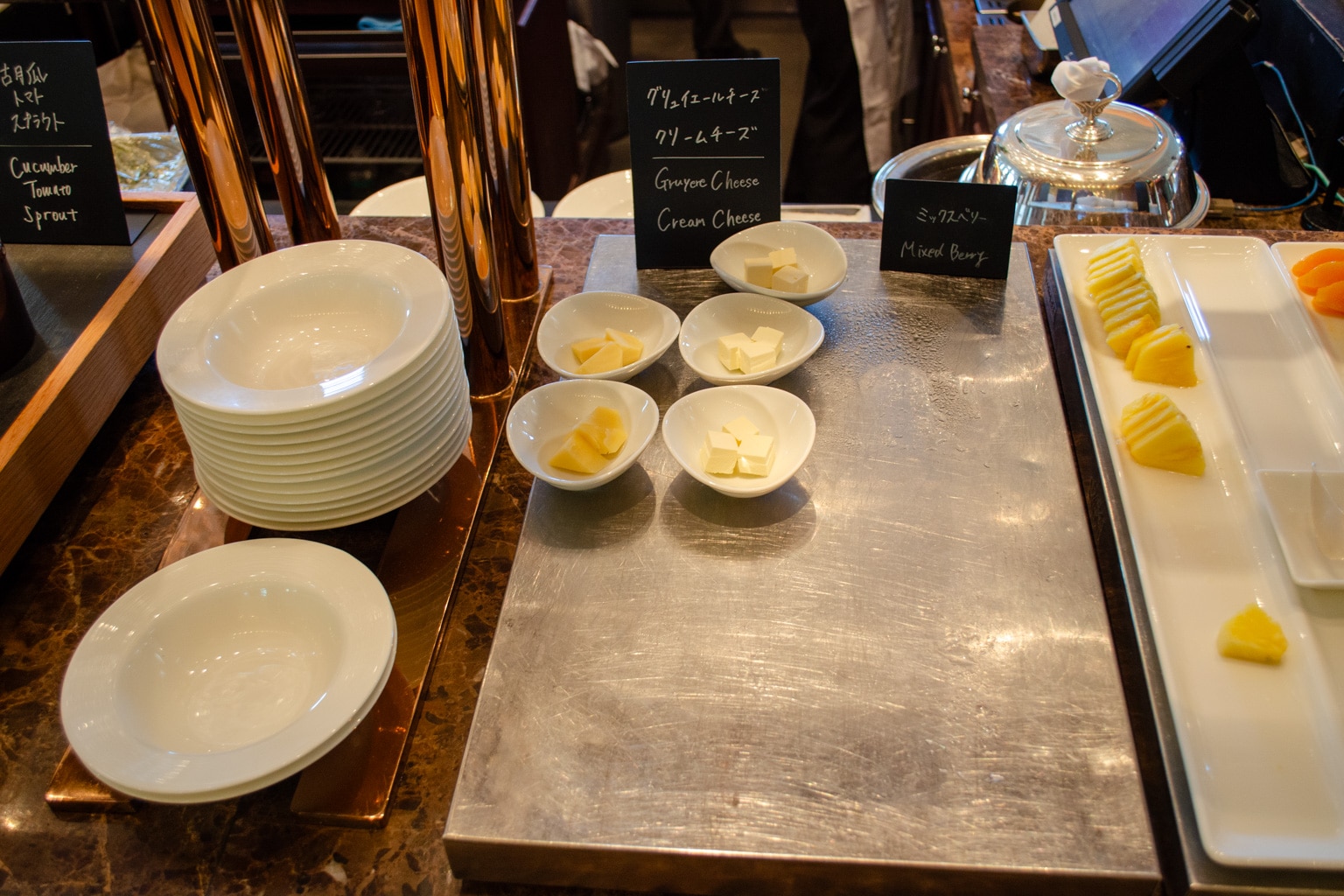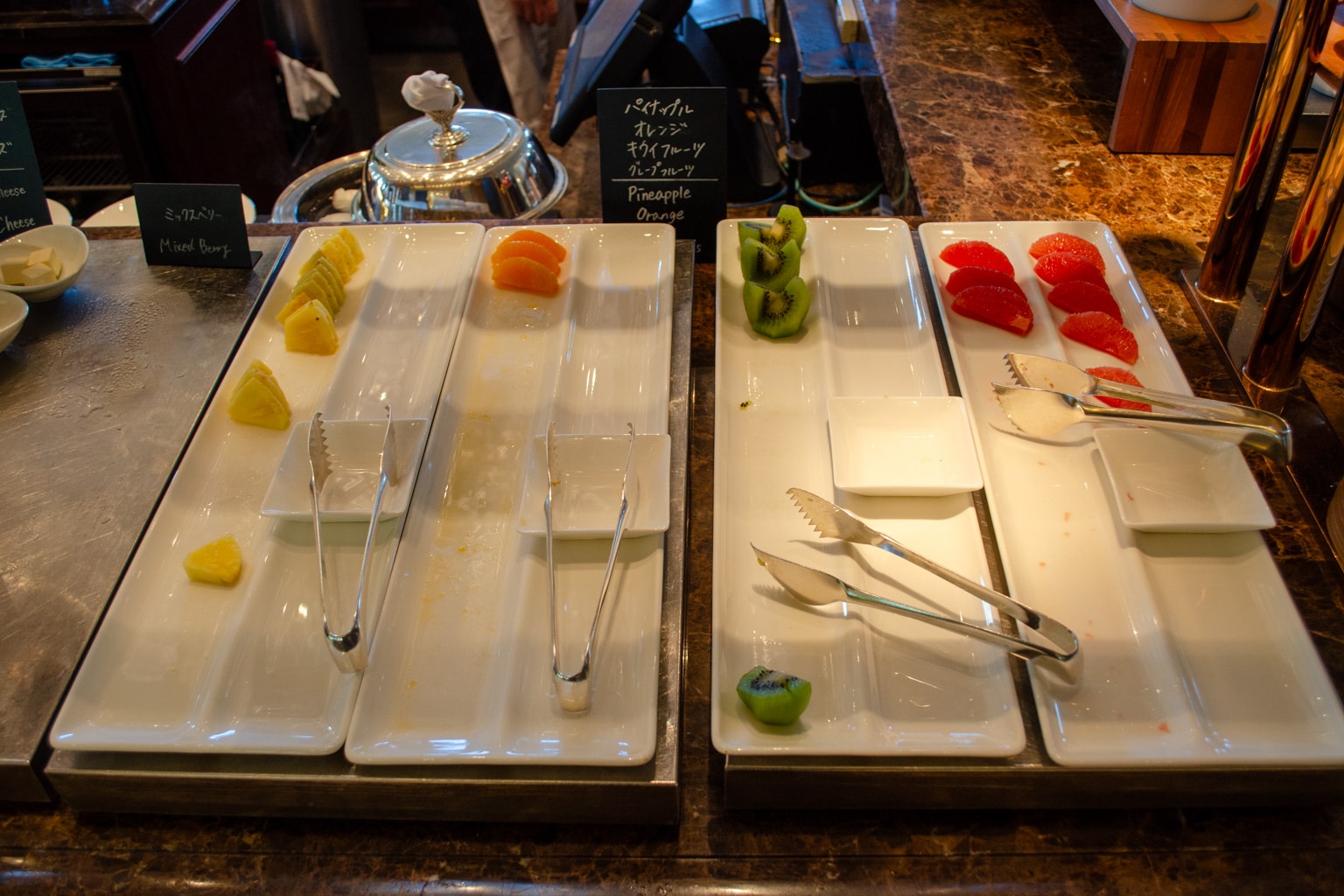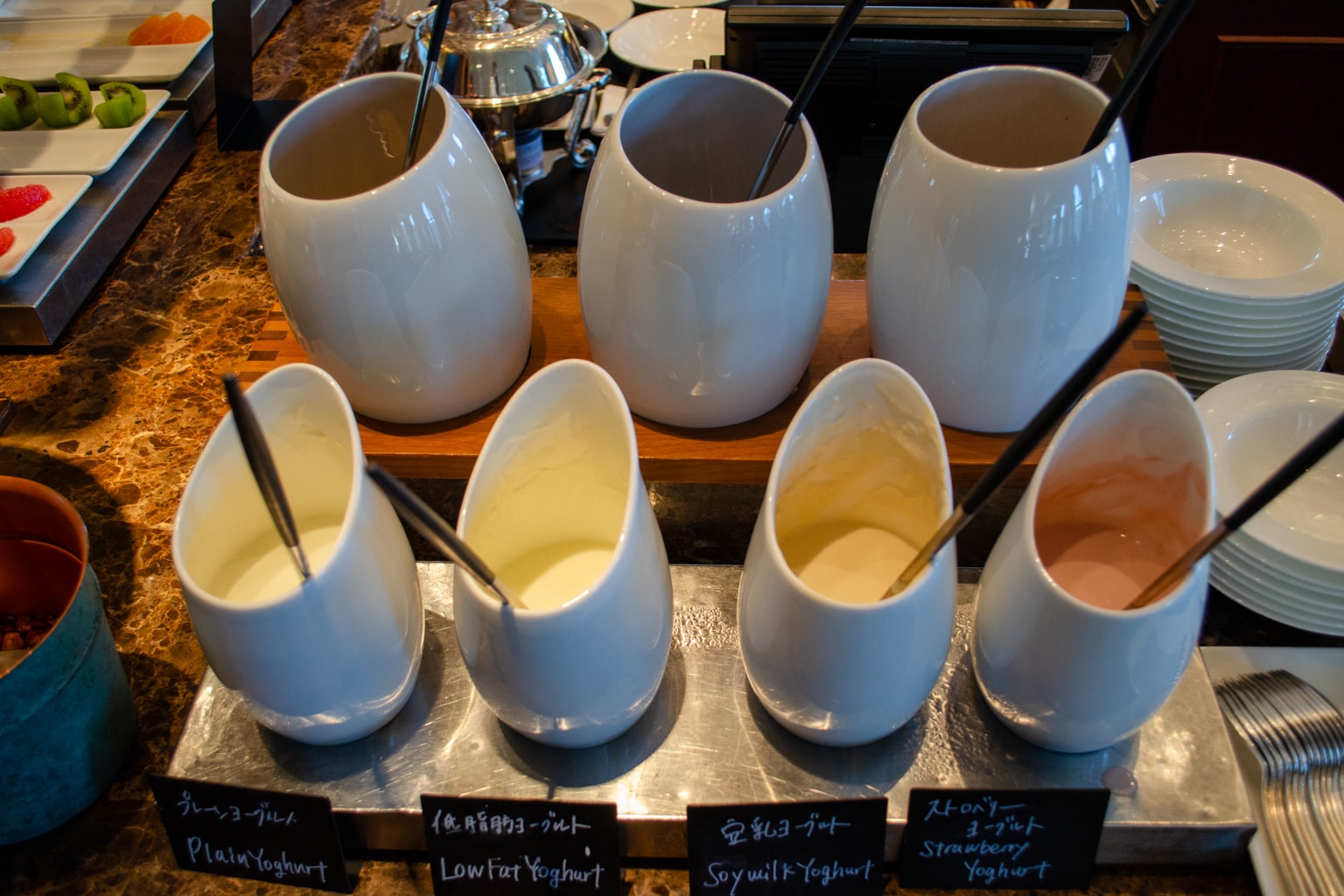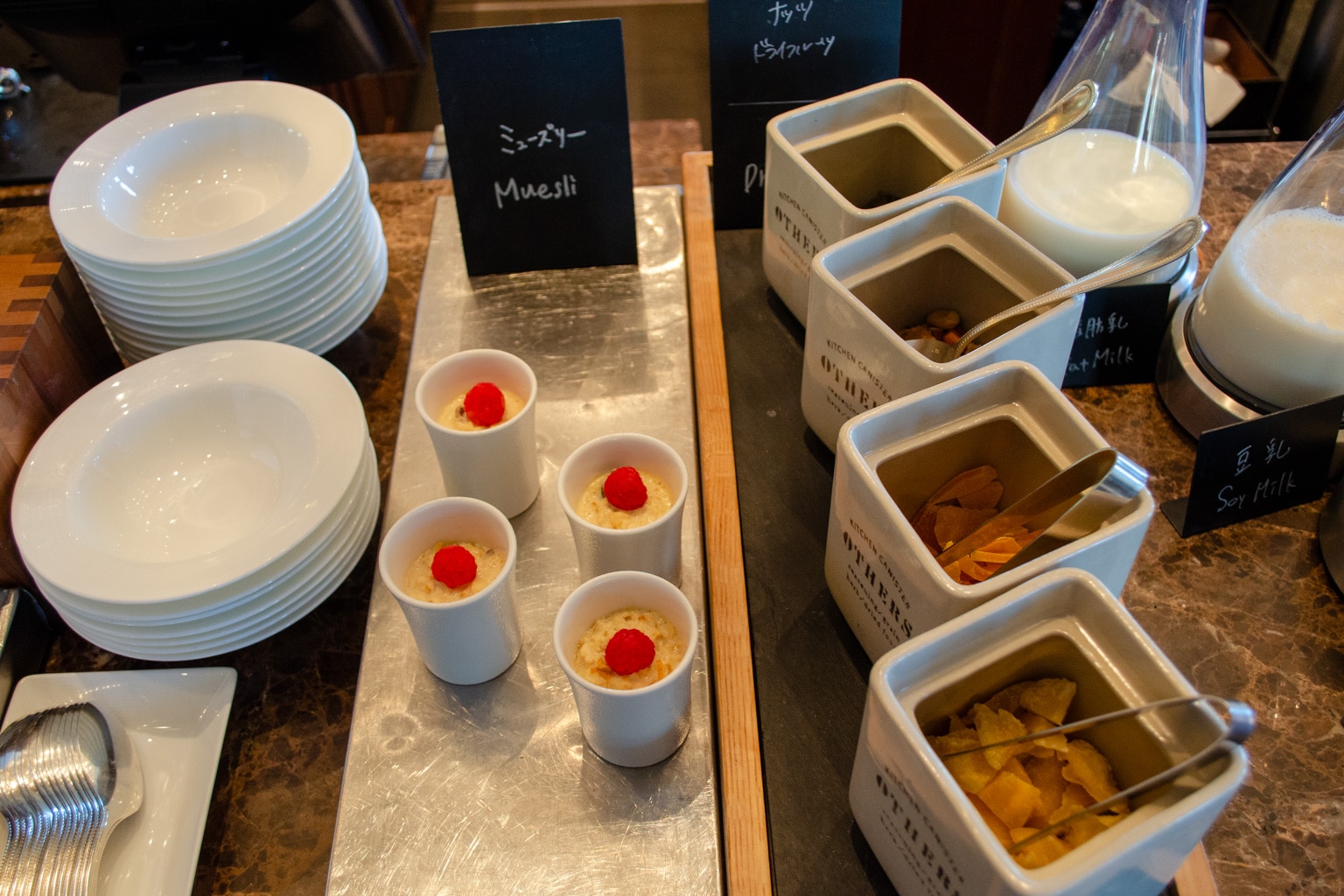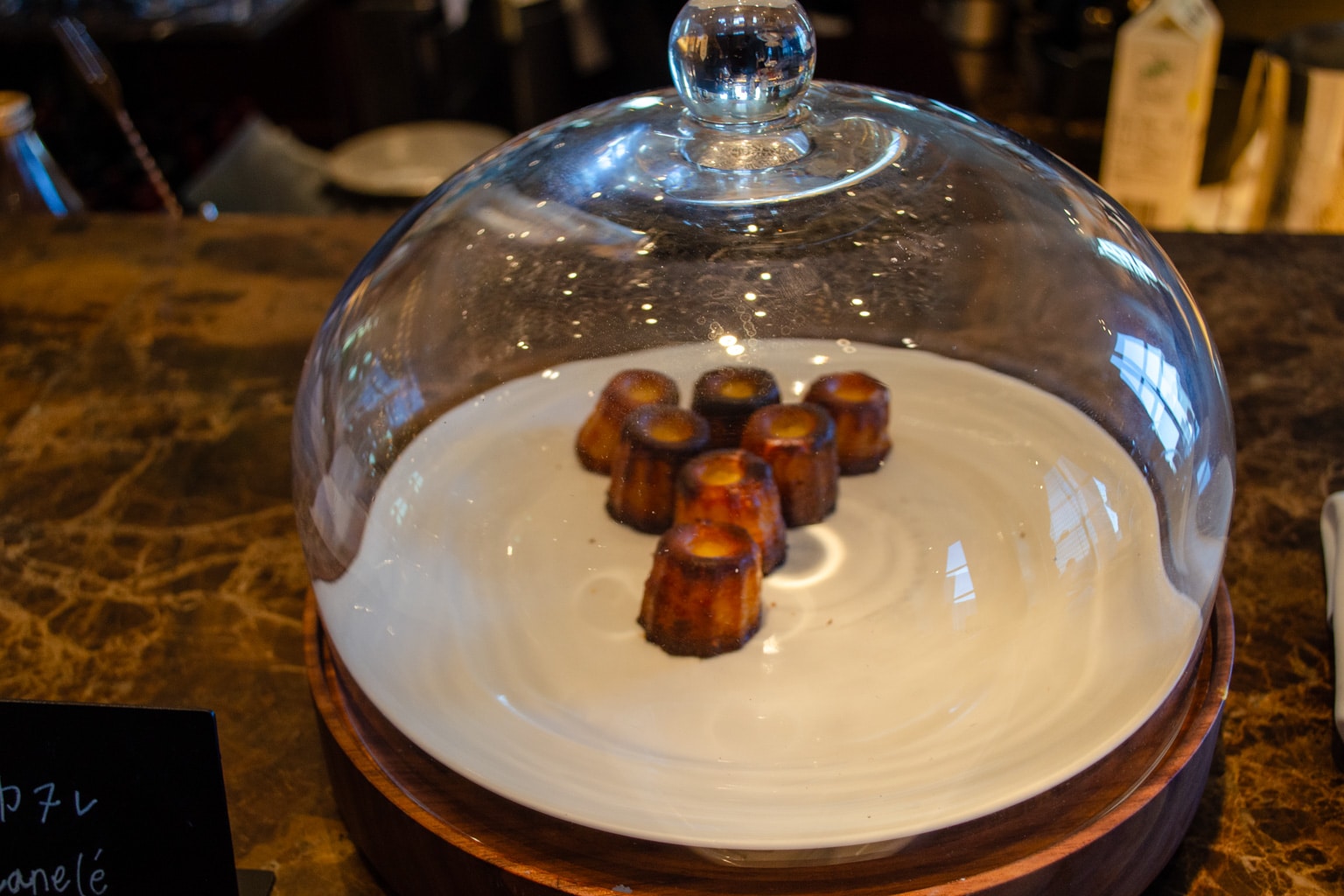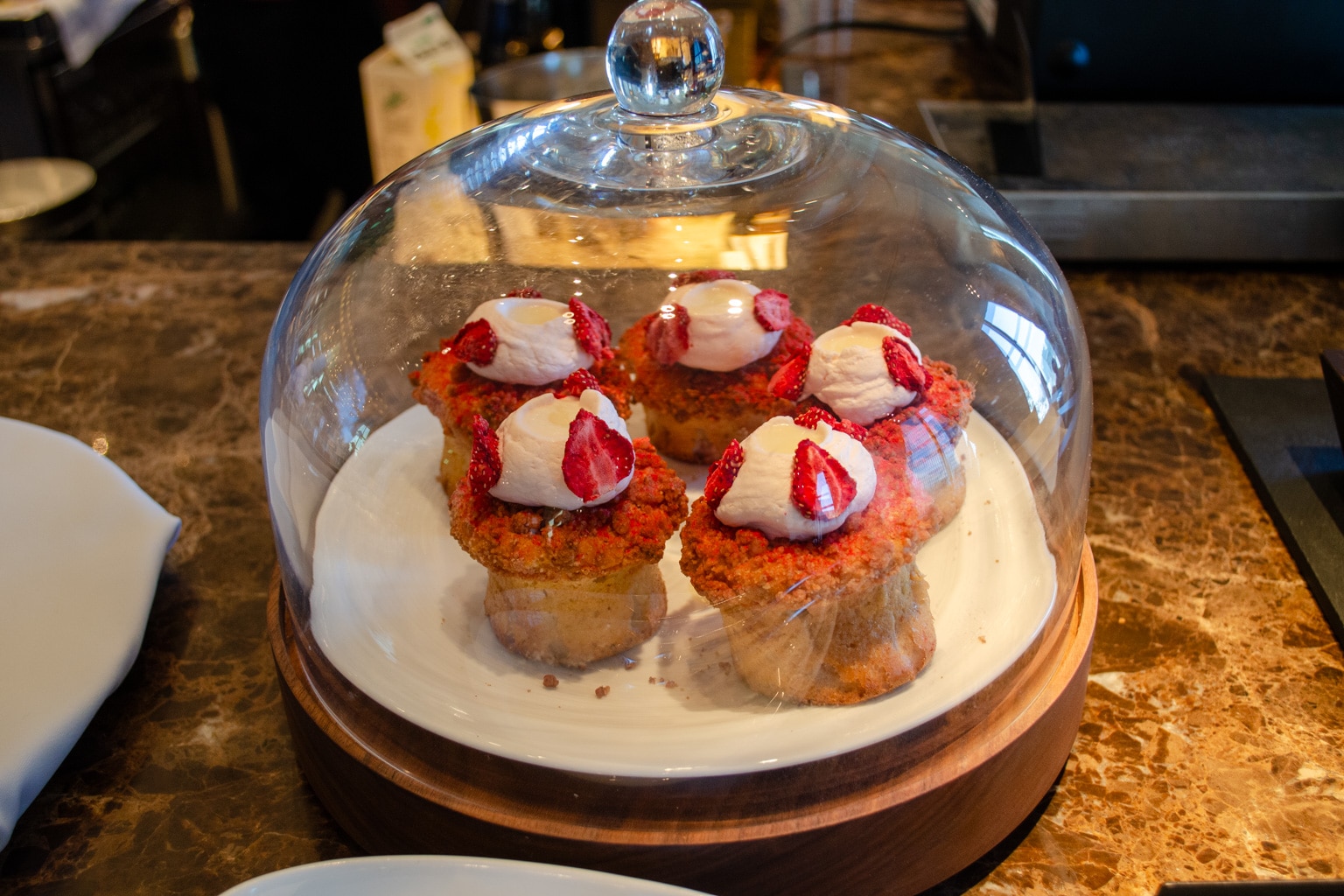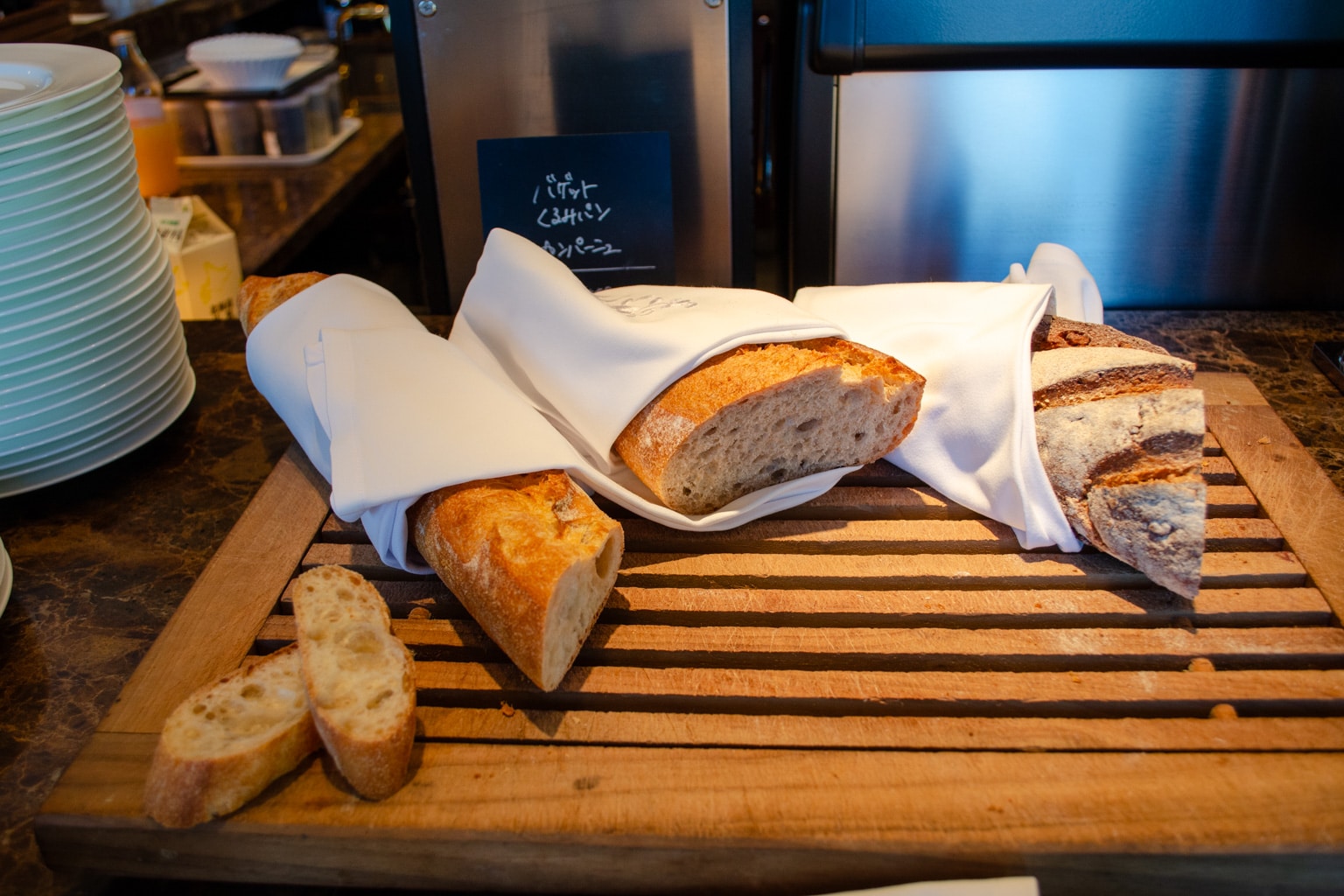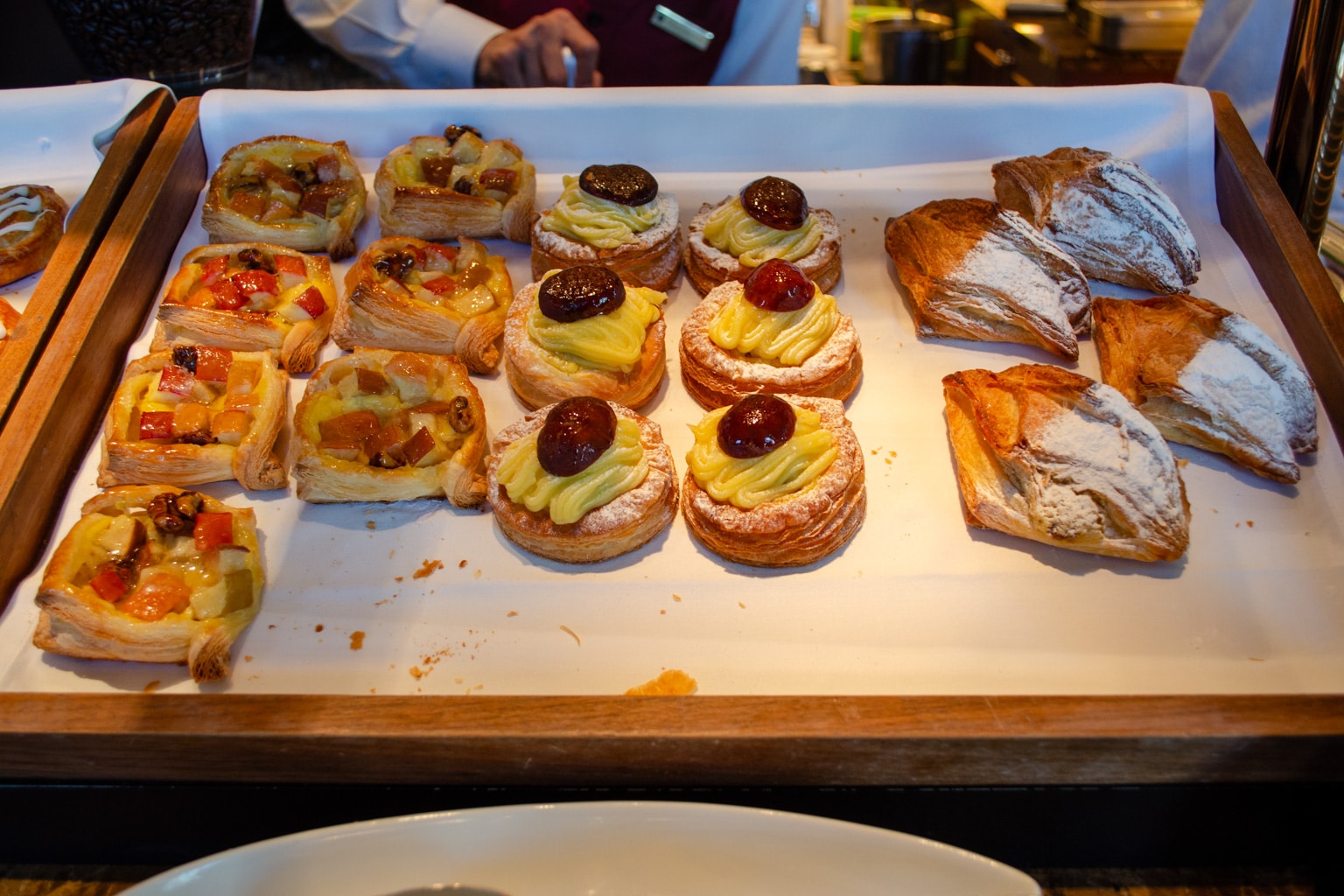After a delightful flight to Japan in Thai Airways First Class, I had three more nights to enjoy in Tokyo before flying back home.
I was particularly anticipating this part of my journey, since I’d head straight from the airport to the Shangri-La Tokyo, my home for the next two nights. After hearing from Ricky about his great experiences at Shangri-La properties, I was thrilled to try it out for myself.
As I’d soon find out, my stay unfolded into a delightful story that redefined what I’ve come to expect from luxury hotels.
Shangri-La Tokyo – Booking
For full disclosure, the Shangri-La Tokyo generously offered to host me for two nights in support of our travel agency.
For a stay at the Shangri-La Tokyo, expect cash rates to range between ¥88,000–200,000 ($615–1,400 USD, $820–1,850 CAD) throughout the year. However, the average price is around ¥100,000 ($700 USD, $930 CAD) per night.
If you’re planning a stay at the Shangri-La Tokyo, it’s in your best interest to book your stay through Shangri-La Luxury Circle, a preferred partner program.
By booking through Shangri-La Luxury Circle with an authorized travel advisor, you can enjoy elite-level benefits for the same price as the best-available flexible rate, including hotel credits, complimentary breakfast for two, and an upgrade confirmed at the time of booking.
Book with Prince of Travel and Shangri-La Luxury Circle
Book a hotel stay with Prince of Travel through Shangri-La Luxury Circle and enjoy exclusive additional benefits at no cost to you, including:
- Daily full breakfast for two guests, including in-room dining
- Upgrade to the next room type category, subject to availability at the time of booking
- Early check-in and late check-out, subject to availability
- Property credit of $100 (USD) or 10% of the room rate, whichever is higher
- Welcome amenity
- Third, Fourth, or Fifth Night Free at select properties
Shangri-La Tokyo – Location
Positioned in the heart of the city, the Shangri-La Tokyo boasts a prime and strategic location that’s hard to beat. Its setting is versatile, and caters to both business and leisure travellers.
The Shangri-La Tokyo is nestled in an area with other top-tier luxury hotels, including two Four Seasons properties, the Mandarin Oriental Tokyo, The Peninsula Tokyo, and the Imperial Hotel Tokyo, amongst others.
The Shangri-La Tokyo is housed inside the Marunouchi Trust Tower in Chiyoda City, just northeast of Tokyo Station.
Due to its proximity to Tokyo Station, it makes getting to the hotel both a breeze and a bit of a challenge.
Making your way to Tokyo Station is relatively easy, regardless of your mode of transportation. However, navigating your way through the station can be quite tricky, especially if it’s your first time.
Tokyo Station is enormous, and has a maze-like structure on the inside. While it might seem daunting, you need not worry, as the Shangri-La Tokyo offers a service whereby a staff member can meet you at the station to guarantee a smooth and hassle-free arrival.
Located just a 15-minute walk away to the west of the hotel is the Imperial Palace, which serves as the residence of the Japanese emperor and a popular tourist destination.
The location of the Shangri-La Tokyo in such proximity to Japan’s largest station guarantees easy access to the extensive Japanese rail network. Not only can you access the entirety of Tokyo, but it’s easy to get to other parts of the country by way of high-speed trains.
The Shangri-La Tokyo is located 40 minutes away from Tokyo Haneda by train, and around 20 minutes by car without traffic. During rush hour, it can take up to 40 minutes.
On the other hand, Tokyo Narita is around an hour and a half by train, or an hour by car, from the Shangri-La Tokyo.
Shangri-La Tokyo – Check-in
The hotel reached out to me in advance of my stay to confirm my arrival details. With my flight details confirmed, the staff proactively suggested a train and departure time that’d take me from Tokyo Narita to Tokyo Station.
After I confirmed the ticket purchase, including my train car number, the hotel arranged for a representative to meet me as I disembarked onto the train platform.

As it turns out, the staff member that met me is from Nepal, and we chatted over our shared love of the country as he navigated us through the throngs of people.
We eventually wound up at the Shangri-La Tokyo’s above-ground entrance, and he placed me in the care of the concierge staff members in the ground-floor lobby of the hotel.

This was a notably pleasant and seamless start to my stay, and I arrived at the hotel feeling as though I’d been there before.
Just overhead of the main entrance is a beautiful painting depicting a serene mountain and lake landscape. I later found out that it’s meant to represent finding a Shangri La — a different world where you can find a different world view, dream, and relax.


Just outside the ground-floor elevators is a boutique with high-end jewellery and trinkets.

I was shown to the elevators, which took me up to the lobby lounge on the 28th floor of the hotel.
Once the elevator doors parted, I stepped out into the hotel lobby lounge and I was immediately struck by the glittering chandeliers that adorned the space. It seemed as though I couldn’t look in any direction without spotting one.

Just outside the elevators is a lobby lounge, which offers a comfortable space with seating placed around the edges. It exudes a sense of calm, tranquility, and timeless luxury.


I stepped through the lobby lounge and walked past the check-in desk to further explore the space.
It’s worth noting that there are over 5,000 pieces of art dotted throughout the hotel, mostly inspired by Chinese poetry.
On the far side of the check-in area is a spiral staircase, which revolves around a massive central chandelier that hung from the ceiling. I found it to be simply breathtaking.



Overtop of the check-in desk is a dazzling chandelier, and the back wall features a beautiful weaved piece of art depicting a town, which is finished in gold and blue fabric.

Once the check-in formalities were completed, I made my way down a hallway decorated with colourful pops of art on the wall. It led to the main set of elevators, and I headed up to the 33rd floor to arrive at Room 3331.



Shangri-La Tokyo – Deluxe King Room
As I stepped onto the 33rd floor, I encountered hallways with soft, warm lighting.


Upon entering my room, I was first in a small foyer that features a piece of art on the wall to the right-hand side. Just below it is a conveniently placed table.

To the immediate left is another piece of art, and just below it is a small desk.
A large floor-to-ceiling closet runs along the wall. Inside, I found a safe, some drawers, an ironing board, two robes, a yukata, slippers, an umbrella, and a yoga mat.



I thought that the umbrella was a very thoughtful addition, and the yoga mat was handy for stretching in the room after a run around the Imperial Palace.
Just past the closet on the right is a small pantry and countertop, which houses a Nespresso coffee maker and a delicate Japanese tea set with an elegant, heavyset pot.


Inside the pantry is where the well-stocked minibar and wine glasses are located.

Walking past the bathroom to the right, the room opens up into the bedroom, which has stunning views of the Tokyo skyline. The room has beige carpets with some light decorative lines and flowers, which pair nicely with the rest of the room.


The room’s centrepiece is the king-sized bed, which is positioned against dark wooden panels and flanked by two large mirrors on the side. On each side of the bed is a light and a bedside table.


On top of the bed I found a set of pajamas, which is a particularly delightful inclusion at many Japanese hotels. There was also a bookmark with a quote from Lost Horizon, the book on which the Shangri-La’s name is based.

The bed directly faces a 49-inch flat-screen TV, which is again bordered by large dark wood panels. A Sony soundbar with Bluetooth connectivity can be found underneath.

To the right of the TV is a spacious desk, which I found to be both comfortable and functional during my stay.


The staff had placed an assortment of snacks and a thoughtful welcome letter for my arrival, which I appreciated.

Just behind the desk is a set of windows overlooking Tokyo.

Against the foot of the windows is a flowing chaise longue, which has a few cushions on top.

In the centre of the room is a spacious bathroom, which can be closed off from the rest of the room with a sliding wooden door.

The bathroom is furnished with tiles and marble throughout, and gives a very luxurious feel.
Inside the bathroom, the vanity is located in the centre. On the left is the wet room with bathtub and shower, and on the right is the toilet.
The toilet room is behind a translucent glass door, and comes equipped with an impressive high-tech Japanese toilet.


In the middle, a marble vanity has a large back-lit mirror above, and to the left is a small TV set in the mirror.


The bathroom’s standout feature is the wet room, which is spacious, functional, and inviting.
The wet room has a large window facing the bedroom, with electronically operated blinds so you can maintain some privacy or soak in the views outside, if you wish.


Directly overhead is a large rain shower with excellent water pressure. Against the wall is a spacious bathtub outlined in black marble and stocked with bath salts.


I found it to be the perfect place to soak after doing a few laps of the Imperial Palace.
Overall, the room was an absolute hit, and it provided a restful space for me to relax and unwind, as well as a functional space to get some work done.
The room exudes qualities of timeless luxury, and I found that it was a well-executed blend of traditional Japanese and urban modern design, with some classic details.
Shangri-La Tokyo – Deluxe Twin Room
During my stay, I had the opportunity to tour a few other rooms that the hotel has on offer.
The Deluxe Twin Room is a base-level room at the Shangri-La Tokyo. It carries over much of the same design and features as the room I stayed in, except it has two beds instead of one.


It’s worth noting that this is one of the largest base-level rooms in Tokyo, at 50 square metres. For comparison, the base-level room at The Prince Gallery Tokyo Kioicho, a Luxury Collection Hotel, is 42 square metres.
In the room, you’ll find the same carpet, dark wood accents, a flat-screen TV, a desk, and a chaise longue by the window.


The bathroom is identical as well.


Shangri-La Tokyo – King Deluxe Room with Imperial Garden View
The next room I toured was the King Deluxe Room with Imperial Garden View, of which there are 80 in the hotel.
It largely was the same as my room, albeit with a view of the Imperial Gardens.



All of the other features remained the same, except for the chaise longue being a bit larger than the one in my room.
Shangri-La Tokyo – Premier Room
Premier Rooms are located in the corners of the hotel. There are 10 such rooms at the Shangri-La Tokyo, which measure a spacious 68 square metres.
The Premier Rooms are one category above the base-level rooms, mainly because of its larger bathroom.
By and large, the room’s décor and setup are in keeping with the aforementioned rooms. However, of note is a dresser, a larger desk, and two sets of windows instead of just one.


The bathroom has a bit of a different setup, as the bathtub directly overlooks the city.

Shangri-La Tokyo – Executive King Suite
The last room type I toured was an Executive King Suite, of which the hotel also has 10. This category also measures 68 square metres, just like the Premier Room.
Upon entering, the bathroom is directly to the right after the foyer.

To the left is a separate living room, which has couches surrounding a coffee table and a flat-screen TV. Notably, the desk is much larger than other room types.



Walking through the living room, you’ll arrive in the bedroom, which has panoramic windows on two sides.



The room’s second flat-screen TV is located to the side of the bed.
Overall, all of the room types at the Shangri-La Tokyo make for a very spacious and comfortable stay in Tokyo. The décor and design is consistent throughout, which exudes a peaceful, warm ambience.
It’s clear that a lot of thought and care was put into the design of each room to ensure guests have a relaxing experience regardless of which room type they’re in.
While the base-level rooms are indeed quite spacious, the higher-level rooms provide even more space, which could be suitable for families.
Keep in mind that a one-category upgrade is confirmed at the time of booking through Shangri-La Luxury Circle.
Shangri-La Tokyo – Horizon Club Lounge
The Shangri-La Tokyo’s Horizon Club Lounge, located on the 37th floor, is an upscale place to unwind and grab some small bites or a drink while enjoying sweeping views of the city.

While the space isn’t particularly large, access is restricted to guests staying in suites or those with Shangri-La Diamond status. In this sense, it’s very exclusive, as there aren’t many guests who enjoy complimentary access.
The lounge is well-appointed with beautiful décor, and has a variety of intimately arranged seating options available.



In addition to drinks throughout the day, the lounge hosts afternoon tea, as well as an evening hors d’oeuvres service.

When I popped in for a look, the spread included madeleines, fresh apples, strawberry and roast beef sushi, assorted rice crackers, cookies, and some hot buffet items.


The Horizon Club Lounge serves breakfast as well, which can either be enjoyed in the lounge or in the comfort of your room.
Eligible guests can also take advantage of the wake-up call drink service.
Shangri-La Tokyo – Breakfast
Breakfast at the Shangri-La Tokyo is served in The Lobby Lounge on the 28th floor, just opposite check-in, from 7–10am daily.

A stunning chandelier hangs inside, suspended over the bar and buffet counters like a giant tree. This chandelier is made of 890 individual glass pieces, each shaped like a ginkgo leaf, paying homage to the numerous ginkgo trees that can be found throughout Tokyo.


The rest of the décor is elegant, with warm-toned light fixtures bathing the lounge in a comforting hue.



The dining tables feature polished wood with matching armchairs. I enjoyed my breakfast next to a window, which offered sunny views of the Tokyo skyline below.



The buffet selection was modest, but well-executed, and all of the options were of high quality.
Plain Japanese congee in a large tureen was accompanied by a variety of traditional toppings, such as pickled vegetables, umeboshi plum, green onions, shrimp, and tsukudani kelp.
A selection of smoked salmon and cold cuts is available, and a salad bar is on offer, too. There was a selection of yogurts, as well as both plant-based and regular milk.
Small ramekins of muesli are prepared for guests, as well as a few options for granola and dried fruit. The cold buffet area also had a selection of cheeses and sliced fruits.
The selection of breakfast pastries was varied and plentiful, with everything from buttery croissants to custard-filled Danishes, from sugar-dusted apple turnovers to flaky puff pastry fruit tarts.
On each of the two mornings of my stay, I selected some muesli, fruit, and yogurt from the buffet, then decided to order from the à la carte breakfast for my main course.

On the first morning, I ordered the lobster eggs royale with caviar, which was decadent, elevated, and delicious.



On the second day, I opted for the bento box, which consisted of all the components of a traditional Japanese breakfast set: steamed egg, salted salmon, spinach in sesame sauce, sweet and salty seaweed, and an assortment of pickled vegetables.
All of this comes paired with miso soup, rice, natto, and tea for a complete Japanese breakfast. I enjoyed trying smaller bites of many different items, and left feeling well-satiated and satisfied.


Overall, my breakfast experience at the Shangri-La Tokyo was elevated to the level you’d expect from a hotel of this calibre, with service and atmosphere to match.
Shangri-La Tokyo – Dining
In addition to breakfast, The Lobby Lounge also serves lunch from 11am–2pm daily, followed by afternoon tea service until 5:30pm. Later, the space turns into a bar, which operates until midnight (except on Sundays, when it’s closed).
For dinner, there are normally two options at the Shangri-La Tokyo: Piacere on the 28th floor for Italian dining, or Nadaman on the 29th floor for Japanese cuisine.
Piacere was closed for renovations while I was there. However, some of the restaurant’s signature dishes are temporarily on offer at The Lobby Lounge as a compromise.

Nadaman, the Japanese restaurant, is open from 11:30am–2pm for lunch, and 5:30–10pm for dinner. Note that it’s closed Wednesdays and Thursdays.
Glowing sakura artwork adorns the walls leading into the restaurant, and ginkgo leaves hang from the ceiling to once again evoke a sense of peace and calm.


The restaurant serves classic á la carte items, such as sushi by the piece, rice and noodle dishes, and grilled seafood, in addition to a large selection of kaiseki (set courses) and teppanyaki options.



Both the restaurant itself and the food on offer looked very nice, and I regret not eating here during my stay.
Shangri-La Tokyo – Other Facilities
Chi, The Spa is a staple at Shangri-La locations, with treatments rooted in traditional and natural healing methods available for guests. This particular location was inspired by Tibet, and is open daily from 11am–8pm.


Upon entering, there’s a small reception area with water, refreshments, and some small sofas. On the back wall is a strategically placed wall of cubbies showcasing various products and ointments.



The spa offers private treatment rooms with a private spa bath, fireplace, shower, and bathroom, as well as separate dedicated massage and treatment rooms.
This was a lovely space, and while I didn’t partake in a treatment during my stay, I appreciated the design of the spa. I imagine that the treatments are just as luxurious as the rest of the hotel.
The Health Club at the Shangri-La Tokyo has two distinct sections. The first section is the fitness centre, which operates around the clock.



It’s not the most spacious facility, but it’s functional and should cater to most workouts. Additionally, there’s water, light bites, headphones, and mini bananas provided, which are thoughtful touches.

The fitness centre also has a sauna and a jacuzzi in each of the change rooms. On several occasions, I spent some time relaxing here during my stay, and had the entire area to myself each time.


The other half of the Health Club is a 20m heated pool that faces the Imperial Palace, which is open daily from 6:30am–9pm. If you’re lucky, you can even spot Mount Fuji on a clear day.



For guests visiting the Health Club, the hotel provides free t-shirts, shorts, socks, and shoe rentals. There’s also swimwear, swim caps, and goggles available to rent, but they’re subject to a surcharge.
Lastly, on the ground floor of the hotel, you can rent bikes from the concierge desk.

Shangri-La Tokyo – Service
The service culture at the Shangri-La Tokyo began well before I’d even set foot at the hotel.
While I’ve had hotels reach out to confirm my arrival details before, it has never come paired with suggestions for trains to take, how to purchase tickets, and confirmation that I’d be met upon my arrival.
Throughout my stay, I was seamlessly handed off from one person to the next, and I felt very well looked after.
The service was discreet, consistent, and remarkably polished, and it’s quite obvious that the hotel has a high standard.
After my morning runs, I was handed a towel and a bottle of water after having the door opened for me. The staff member had also preemptively called the elevator and selected the floor on my behalf.
In sum, the entire experience at the Shangri-La Tokyo has raised the bar regarding what I’ve come to expect at a top-tier luxury property.
Conclusion
From start to finish, my stay at the Shangri-La Tokyo was outstanding, and I hope to return for another visit whenever I make my way back to Tokyo.
The service stood well and truly above other luxury hotels that I’ve been to. With warm, inviting décor throughout the hotel, excellent food, and a prime location, the Shangri-La Tokyo is a perfect spot for an elevated stay.
The hotel delivered on all fronts, and I look forward to future stays at other Shangri-La properties to see how they compare.

